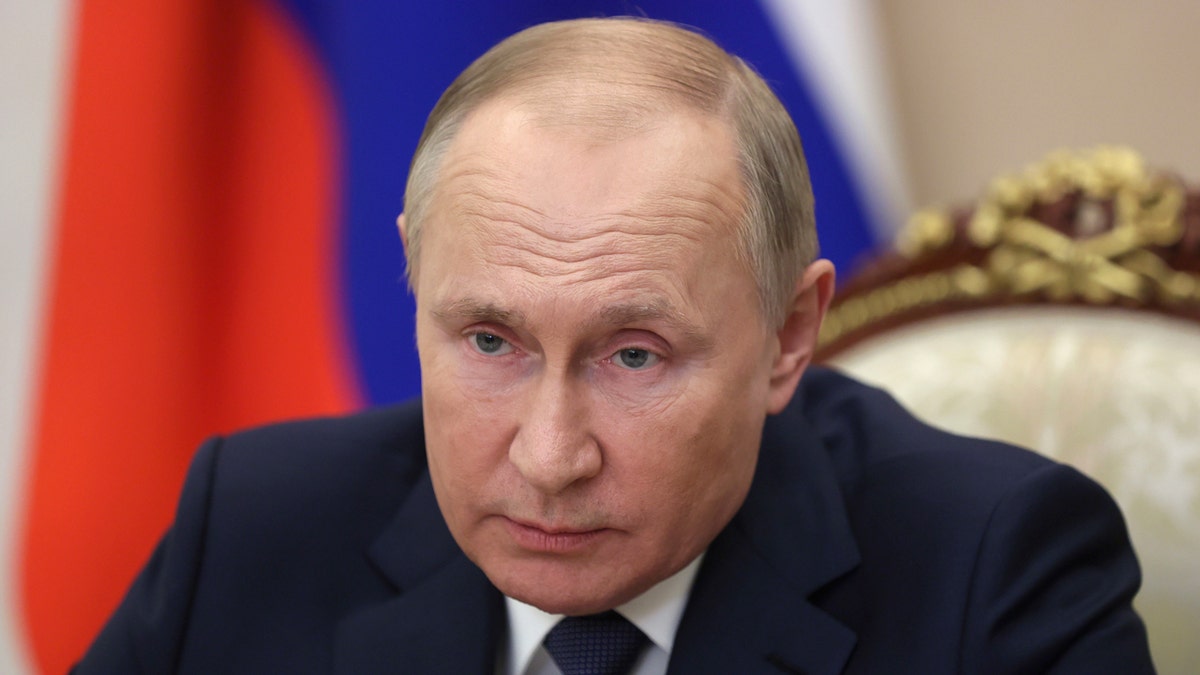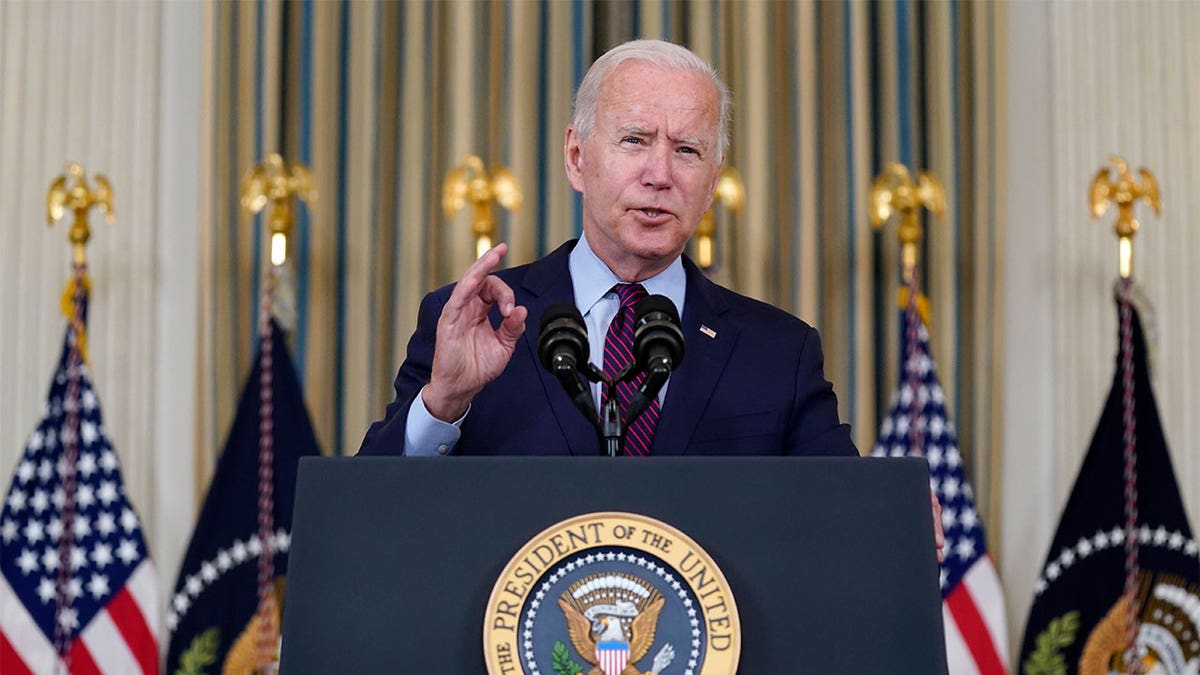Biden considers new sanctions on Russia over concerns of Ukraine invasion
Fox News White House correspondent Jacqui Heinrich has the latest ahead of Biden’s expected conversation with Putin.
With a massive build of Russian troops near Ukraine’s border, Russia’s Vladimir Putin is indicating a willingness to risk a military conflict, but analysts say while the threat is serious, an invasion is not certain.
The threat of an invasion will be the central subject of President Biden’s video call with Putin on Tuesday. Biden is expected to warn of dire consequences should Russia follow through with a military offensive, while Putin is expected to reiterate his ultimatum that NATO should not allow Ukraine to join its military alliance.
The outcome of the video call could have major implications as Putin weighs the potential costs of a full-fledged invasion of Ukraine. Jim Townsend, a former Pentagon official and adjunct senior fellow in the CNAS Transatlantic Security Program, said Putin is an "opportunist" who sees an invasion as one of several potential pathways for achieving his goals in the region.
BIDEN, PUTIN SUMMIT: 4 THINGS TO KNOW

Russian President Vladimir Putin holds a video conference to address participants in a congress of the United Russia party marking the 20th anniversary of the party founding, in Moscow, Russia, Saturday, Dec. 4, 2021. (Mikhail Metzel, Sputnik, Kremlin Pool Photo via AP)
"If he feels the response from the West is not going to be as painful as we think it is, then he’s got that option to invade," Townsend said. "But if he’s going to get indications from the West that he’s going to get out of it [something] he finds valuable, that could make him change his mind, too."
U.S. intelligence officials conclude Russia is planning for a military offensive by as soon as early next year. A senior administration official said Russia’s plan includes 100 battalion tactical groups and an estimated 175,000 military personnel, half of whom are already near the border. Intelligence officials have also noted an uptick in Russian propaganda aimed at disparaging NATO and Ukraine’s government.
The maneuvers have stoked fear that Russia could attempt a takeover like its annexation of Crimea from Ukraine in 2014. Russian troops have backed separatist forces on Ukraine’s border for years, though the Kremlin has long denied direct involvement in that conflict.
"Both the forces being the deployed and the areas in which they are being deployed, plus other indications — night maneuverings, etc. — clearly suggest Russia is taking steps that would make it possible to invade," said Ivo Daalder, who served as U.S. ambassador to NATO from 2009 to 2013. "And the rhetoric coming from Moscow, and particularly from Putin, regarding red lines and that the status quo is unacceptable is also cause for real concern."

President Joe Biden and Russian President Vladimir Putin, arrive to meet at the 'Villa la Grange', in Geneva, Switzerland, June 16, 2021. (AP Photo/Alexander Zemlianichenko, File Pool)
Putin said last week that Russia would consider any effort by the U.S. or its allies to place weapons systems in Ukraine as a "red line" that would result in retaliation. Meanwhile, Biden and NATO officials are adamant Russia has no influence over the alliance’s operations.
Putin’s gambit is "no longer about NATO membership," according to Jeffrey Edmonds, a former Russia director for the National Security Council and senior researcher at CNA. He noted mounting frustration at the Kremlin over NATO’s security assistance to Ukraine and expanded operations in the Black Sea.
"I do not think he has made a decision to invade yet, but I do believe he is pessimistic of getting the outcome he wants and that’s why this buildup is different," he said. "It has been an extended buildup that the Kremlin was denying for a long time – not the kind of thing you do if your intention is just to signal."
Ahead of the video call, Biden said he planned to have a "long discussion" with Putin about Russia’s aggressive stance toward Ukraine. The president is expected to affirm the U.S.’s support for Ukraine’s territorial sovereignty and to warn of severe economic penalties if Russia invades.

President Joe Biden delivers remarks on the debt ceiling during an event in the State Dining Room of the White House, Monday, Oct. 4, 2021, in Washington. (AP Photo/Evan Vucci)
The Biden administration is said to be considering several options, including blocking Russia from the SWIFT international banking system – a move widely considered to be the economic "nuclear option." A senior administration official said Biden will also warn Putin the U.S. will send troops to NATO nations in Eastern Europe.
"We’re in the final stages of being in a place where we can turn this around, what he’s doing. I think Biden will be very specific on what will happen," said Townsend. "I think they’ll be not just the economic and financial sanctions. I’m hoping he’ll say something like, ‘we will rearm Europe.’ I think he’s going to need to have a military component in there, too."
CLICK HERE TO GET THE FOX NEWS APP
A clear warning about the military costs of an invasion should be a key element of Biden’s message to Putin, according to Daalder.
"That’s the one area that Biden can and must influence. It’s important to underscore that even with 175,000 troops, invading Ukraine won’t be an easy affair," he said. "Ukraine has 250,000 troops, most battle-hardened by 7 years of conflict in eastern Ukraine. U.S. and NATO training and supplies of arms has made the Ukrainian military more effective and lethal."

























